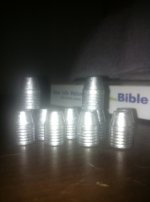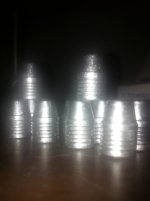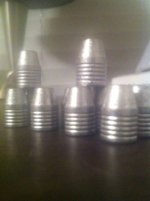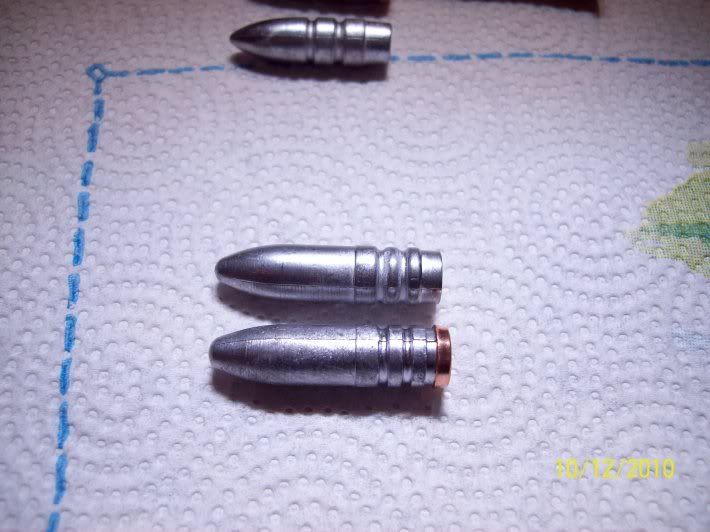The top bullet of that pair looks like one from a cool melt where tin has separated, or a cold mold, to me.
Tin does not separate from an alloy. Tin and lead and antimony are true solutions, meaning they're not easily separated. Tin will "cook out" if the alloy is heated much over 750 degrees, the tin-lead-antimony mixture is exposed to the atmosphere at the surface of the melt. Tin oxidizes much easier than lead or antimony. Therefore it forms a scum on the surface of the melted lead faster than the other two metals.
A fine point I know, but the old myth that lead, tin, and antimony separate is just that, a myth. The theory that because tin is lighter than lead, it separates into a layer on top of the lead.
Now about the cleanliness of the mold, oil or some other contaminate can make for wrinkles and poor fillout. But they always do it until they are either removed, or burn off. They just don't do it now and then.
I take a new mold, or one that I've stored for a long time with preservative grease on it, Boil it in very soapy water,(Dawn), for ten - fifteen minutes. Then a rinse in very hot water. This will remove darn near anything that would otherwise cause wrinkles, or poor fill-out.
Another cause of poor fill-out is pouring technique. Some molds must have the stream of lead go straight down the sprue hole. Some demand the lead be poured on the taper of the sprue plate to swirl the lead into the cavity. Some molds demand to be pressure poured, the ladle in contact with the sprue plate with the weight of the lead creating pressure on the cavity.
I find pressure pouring important with big boolits like for my 45/70. Most others work well with my bottom pour lee 20 pounder with a mold guide. The guide helps make the location of the stream consistent from one to the next.




